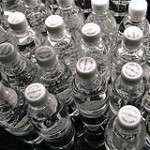by Catherine Haug, May 3, 2013
(Photo, right, by D. Morgan, used with permission)
While there may be a lot of debate about diet: hi-carb vs lo-carb; vegetarian vs omnivore; modern vs paleo; and so on, it seems there are a few foods that transcend the debate – the so-called “superfoods.” These are touted because of their high nutritional value in various categories: vitamin-rich, mineral-rich, antioxidant-rich, and essential oil-rich. But they also have amazing taste. Note, however, there is one category of foods that seldom appear on a superfood list: grains. This is probably because of their difficult to neutralize anti-nutrients, such as gluten. But that’s another topic.
There is a well-founded belief that every area around the globe has its own native superfoods. Many believe – and I am one of those – that we should focus on our own native super foods, rather than reaching around the globe for the ‘latest and greatest’ touted by the media. One example of this is açaí berries native to Central and South America (4), and goji berries native to Asia (5). While these are among the richest foods for antioxidants, we have our own contender for that title: huckleberries.
AARP Magazine has featured several articles about superfoods, including Superfoods That Power You Up, by Rebecca Katz and Monica Bhide in the current April/May 2013 issue (1). This article reminded me of the herbs covered by Linda Peterson in her April ESP presentation on the Nutritional Value of Herbs. (more…)





